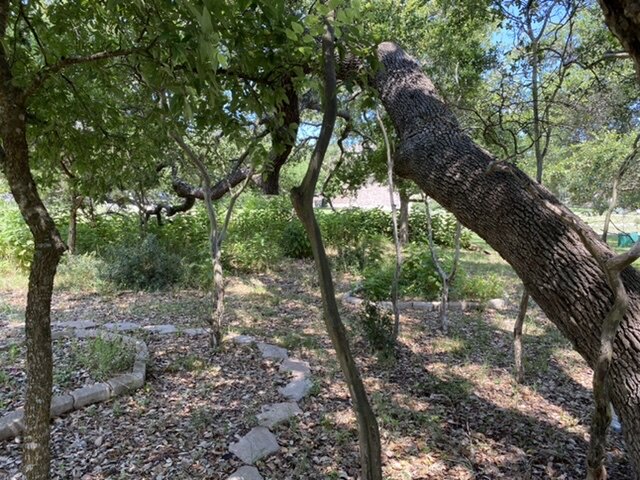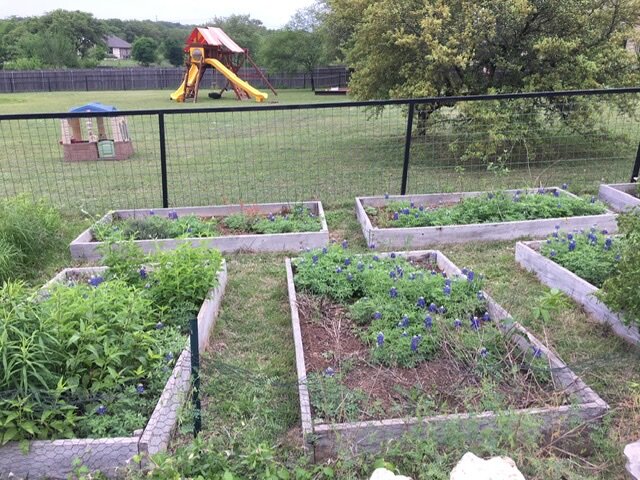We moved into our new house in the Hill Country in December 2012, and we had a ton of decisions to make, and fast. The front yard was home to a grouping of large, old live oak trees with a few other species mixed in. The back was a patch of overgrazed grassland. One of the biggest challenges was to prepare the yard in time for the spring. Oh, and I was pregnant with our third son. Very pregnant. That doesn’t lend itself to massive do-it-yourself projects.
The first decision we made was to think about our property in terms of different habitats. The front would be the woodland habitat. We put a thin layer of mulch around the trees and let the dead leaves accumulate there. Leaf litter is a wonderful place for overwintering insects, in particular. Two years later, we added nectar plant beds. I also planted pipevine, the host plant for pipevine swallowtail butterflies. Near the front, I seeded for wildflowers and planted several varieties of salvia, one of my favorite all-purpose plants. Since then, frost flowers and antelope horn milkweed have taken up residence there, too. We kept some mowed, grassy areas because we live in a neighborhood and don’t want to offend our neighbors. My husband describes our yard as a mullet—business in the front, party in the back.
the woodland habitat
On one side of the house, we created raised beds and later an enclosed area (lots of hungry deer around,too) for fruit, flowers, and seeds. The other side of the house is similar to a hedge with a couple of holly trees for nesting birds.
enclosed pollinator/bird garden
pollinator garden, early spring
And then there was the backyard . . . the biggest area of all. I am going to tell you up front that I am not an expert. The backyard is an experiment, a learn-as-you-go type of project. It was the perfect site for a pocket prairie (a mini-prairie or a prairie garden), a habitat that would contain a mix of native grasses and wildflowers. If you happen to have the time, energy, and resources, this type of project begins by clearing out unwanted plants/grasses and placing black plastic on the soil over the winter. Working with bare soil, you can then go ahead and seed it or plant grass plugs and flowers. We did have some bare areas, and so that first winter, we decided to seed with annual rye grass to prevent unwanted plants from taking root. But attempting to clear the entire area was not going to happen. Instead, in mid-February, my husband used a weed whacker to cut back the tall grasses to about two feet in height.
The following spring, we cut back the rye grass, raked the soil, spread native grass and wildflower seed, and walked over top of it to set the seeds. The following year, I hired a landscape group to create a path and plant several native trees (digging a hole in the rocky soil is a daunting task).
the beginning of the prairie
Is it perfect? No. Not yet. Actually, one of the beautiful things about this type of gardening is that there is no such thing as perfect. The birds and the bugs are not particular about that sort of thing. There are several maintenance issues that I am trying to tackle —what to keep and what to remove, for example. But I am amazed on a daily basis by the number of birds, insects, lizards, and other wildlife that share our yard. We keep binoculars, a spotting scope, and our cameras at the ready. Whether we are outside or inside looking out, life is never dull around here!
a newly molted cicada next to the old exoskeleton
salt marsh moth caterpillar







